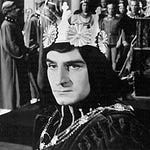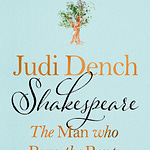On 3rd June, I am discussing Electric Spark with Frances Wilson at Blackwells in Oxford. And on 17th July I am discussing The Genius Myth with Helen Lewis at Dr. Johnson’s House.
Some of what is discussed in the video is not mentioned in these notes, and vice-versa. A piece will follow next week writing up some of the comments in the video about King John as an important transition play for Shakesepare.
After Shakespeare’s death the performance record for King John is quiet, but starting in 1737 it becomes a popular play again, with performances in 58 seasons during the following 120 years. In 1760/61, 1766/67, and 1817/18 it was performed at more than one theatre.
King John is an actor’s play, full of speeches that give an opportunity for intense performance.
However, it is not easy to fit King John into revivals of the history plays and so it has lagged behind the Henriad. In 1944 it was said to be unknown on the stage, having fallen out of popularity.
Some say the play is popular when made dramatic and unpopular when made ideological, which causes a loss of the passion that attracted actors like Garrick and Kemble to the play in earlier generations.
John is hardly apolitical. It has been used as a feverishly anti-Papist play in the eighteenth century and a strongly anti-war play in 1980s Germany, when it was performed seemingly in response to the USA’s decision to deploy Pershing missiles in West Germany.
However, as L.A. Beaurline says in the introduction to the Cambridge edition, John’s political relevance has been a “spasmodic phenomenon” and unlikely to account for changes in popularity.
Changes in acting styles are more likely to account for the play’s reputation. John rewards passionate acting, not the muted realism that emerged as the canonical taste in the twentieth century. So it is no surprise to find that Baliol Holloway performed in the play.







